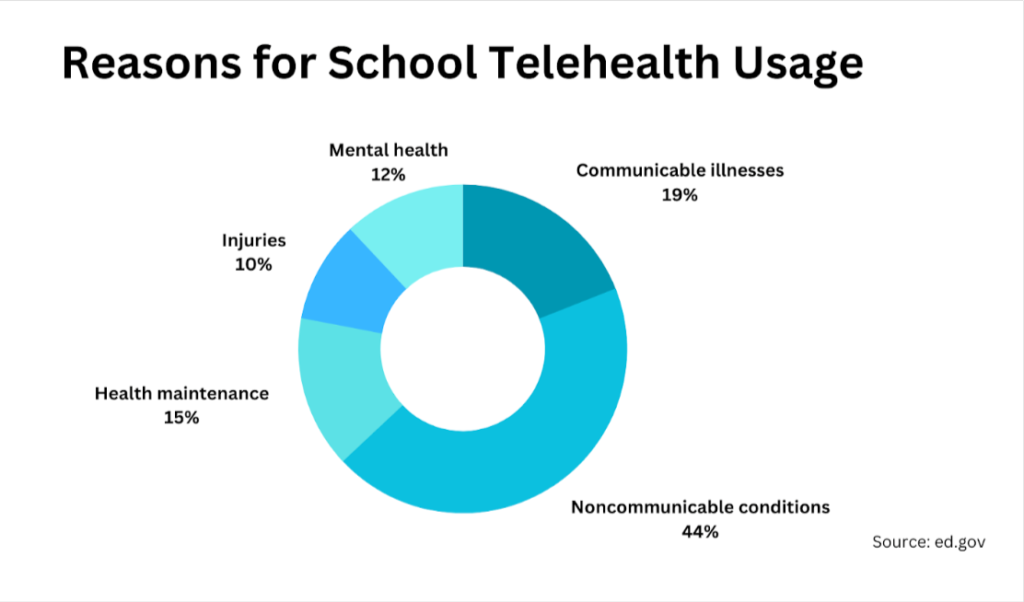
Recent events, from gun violence to the global pandemic, have intensified the spotlight on youth mental health. As concerns grow, it’s clear that the need for mental health services in schools is more pressing than ever. Yet, despite the urgency, many young individuals face significant barriers to accessing these crucial services.
While the challenges are evident, solutions are emerging. One major player stepping up to the plate is Medicaid.
Covering a significant part of the youth population, Medicaid has become a pivotal force in bridging the gap, ensuring that behavioral health services are not only available but also accessible in schools. But how exactly are they delivering these services?
The Rising Concerns of Youth Mental Health
- Concerns about youth mental health and well-being have surged, especially in the context of gun violence and the COVID-19 pandemic.
- Despite these concerns, many children and adolescents face barriers to accessing behavioral health services.
Barriers to Accessing Behavioral Health Services
- In the Robla Elementary School District in California, about 26% of students tried out telemedicine services at least once over a span of two years, and 9% of them used it multiple times. They used telemedicine mainly for noncommunicable health conditions (44%) and communicable illnesses (19%).
- The good news is that almost all of these healthcare telemedicine visits (94%) allowed students to return to class, ensuring they didn’t miss out on about 3 hours of instruction for the rest of the school day.
- To make the most of telemedicine in schools, having the right telehealth platform and best EHR software for mental health can make a big difference.
The Role of Medicaid in School-Based Behavioral Health Services
- Medicaid provides a vital lifeline in expanding access to behavioral health services among youth. It currently covers 38% of all children and over a third of all adolescents aged 12-18 nationwide. Medicaid provides mental health services to nearly 30 million young people.
- Within schools, Medicaid has become indispensable in financing the delivery of behavioral health services. The percentage of school-based health centers that billed Medicaid increased from 71% in 2004 to 87% in 2014. And in the 2021-2022 school year, almost all public schools (96%) reported having some form of mental health services – services that Medicaid dollars help fund.
- Medicaid not only offers financial support but also provides a framework and guidance to shape school-based programs. Many states contract with Medicaid Managed Care Organizations (MCOs) to administer school-based services. The extensive coverage and strategic role of Medicaid have made it a mainstay in efforts to bridge the mental healthcare access gap among youth.
The Promise of Telehealth Services in Schools
- Even before the pandemic hit, a few school-based programs were already offering behavioral health services through telehealth. But when COVID-19 came along, states broadened their Medicaid telehealth policies, leading to a surge in telehealth usage among all age groups.
- A study conducted in the Robla Elementary School District in California discovered that telemedicine could help students get treatment right in the middle of the school day. This meant they could return to their classes for the rest of the day’s lessons. It’s a win-win situation.
Schools are becoming a hub for mental health support. With almost all public schools now offering some form of mental health service, the landscape of school-based care is evolving.
Medicaid’s role is expanding, and with many funding sources at play, the potential for comprehensive mental health support in schools is promising. Yet, the approach needs to be uniform across the board.

State Initiatives to Promote School-Based Behavioral Health Services
Different states, different strategies. From Arizona’s collaboration with local education agencies to California’s statewide initiatives, each state is carving its path in enhancing school-based behavioral health services.
These state-level efforts not only showcase the adaptability of the system but also hint at the future possibilities of telehealth in this domain.
Arizona
- Collaborates with local education agencies to provide school-based behavioral health services.
- Reimburses certain providers for telemedicine services.
California
- Has statewide initiatives to expand Medi-Cal’s role in school-based behavioral health services.
- Allows reimbursement for services provided by qualified mental health professionals through telehealth.
South Carolina
- Partners with school districts to increase access to behavioral health services.
- Reimburses telemedicine services for assessments, evaluations, and treatment.
The Advent of Telehealth in School-Based Behavioral Health Services
Different states, different strategies. From Arizona’s collaboration with local education agencies to California’s statewide initiatives, each state is carving its path in enhancing school-based behavioral health services.
These state-level efforts not only showcase the adaptability of the system but also hint at the future possibilities of telehealth in this domain.
Evolution of Telehealth in Schools
- Some school-based programs provided behavioral health services through telehealth even before the pandemic.
- During COVID-19, states expanded Medicaid telehealth policies, increasing use.
Potential Benefits
- Can increase access to care for underserved students.
- Allows students to receive care and return to class.
- Provides continuity of care between school and home.
Potential Challenges
- Requires training of school staff and cultural change.
- Need for privacy and technology infrastructure.
- Importance of blended care model.
Looking Ahead: Future Prospects and Policies
Recent legislation such as the Advancing Telehealth Beyond COVID-19 Act points to the expanded role telehealth can play in school-based behavioral health services in the future.
To integrate telehealth effectively while ensuring high-quality care, we need to carefully plan and coordinate. As states advance their initiatives in this evolving landscape, Medicaid will remain pivotal in leading the way forward.
Frequently Asked Questions
- How has Medicaid evolved in its role of supporting school-based behavioral health services?
Medicaid’s involvement in financing and delivering school-based behavioral health services has steadily grown. Today, Medicaid covers a significant part of the youth population and plays a major part in making these services financially accessible.
- What are some state-level initiatives that have been particularly effective in promoting school-based behavioral health services?
States like Arizona, California, and South Carolina have implemented innovative strategies, from collaborating with school districts to launching statewide initiatives, to advance school-based behavioral health services and incorporate telehealth.
- How can telehealth be effectively integrated into school-based behavioral health services without compromising the quality of care?
Careful training, appropriate infrastructure, and a blended model balancing in-person and telehealth care can allow telehealth to enhance access while maintaining continuity and quality.
Bottom Line
As youth mental health needs intensify, telehealth presents a promising opportunity to expand access to crucial school-based behavioral health services.
While challenges remain, state Medicaid programs are demonstrating creative solutions. By coordinating efforts, we can thoughtfully integrate telehealth to serve our youth population when they need it most.



